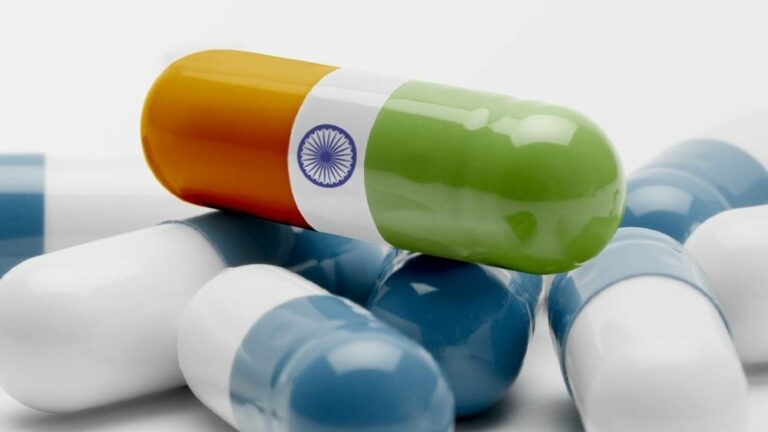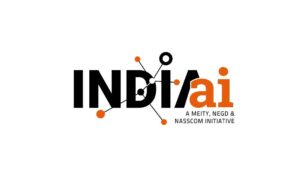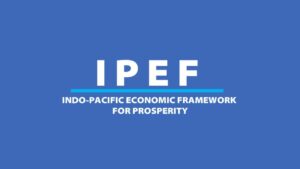The Indian pharmaceutical industry ranks third internationally in volume. India is a chief exporter of pharmaceuticals with more than 200 nations served by Indian pharma exports. India supplies more than 50% of Africa’s requirement for generics, around 40% of generic demand in the USA, and around 25% of all medicine in the UK. Although India is proud of being the ‘pharmacy of the world,’ it would be right to say that the drugs regulatory bodies and laws must take the spate of oft-warnings more seriously. In the recent past, India has been beaten by a few mega pharma worries. The world mostly depends on the Indian pharmaceutical industry. However, growing worries over quality and the absence of drug regulations policy lead to the query of whether India is dwindling in its role.
- In February 2023, an Indian pharmaceutical company based in Chennai, Global Pharma Healthcare, deferred a line of eye-drop manufacture being distributed in the USA market after the nation’s health authorities warned that it could be adulterated with drug-resistant germs that have been related to statements of eternal vision damage and one death from bloodstream contamination.
- In December 2022, the Central Drugs Standard Control Organisation (CDSCO) instigated an investigation concerning the death of eighteen children in Uzbekistan supposedly connected to a cough syrup produced by an Indian firm Marion Biotech based in Uttar Pradesh.
- In October 2022, the World Health Organization (WHO) issued a medical produce warning. Four products from India-based Maiden Pharmaceuticals based in New Delhi were adulterated with intolerable volumes of diethylene glycol and ethylene glycol, both poisonous to human beings.
Drug regulation and supervision, also known as Pharmacovigilance is imperative in ensuring the safety of medicines and safeguarding patients from harm. As per the law, the Central Drugs Standard Control Organisation (CDSCO) is the apex supervisory association. The CDSCO delegates the Drug Controller General of India (DCGI), the authority to act as the governing head. The DGCI must perform under the guidance of the Drug Technical Advisory Board (DTAB) and the Drug Consultative Committee (DCC).
The CDSCO functions through zonal offices spread across India, which have defined functions in drug regulation, namely inspections, recalls, and market investigation. It is liable for authorizing new drugs, import of drugs and devices, clinical tests, and laying down benchmarks for drugs. It has six zonal offices, four sub-zonal offices, thirteen port offices, and seven laboratories under its command.
Additionally, every state has its regulator which is frequently conjoined with the food and drug management in the state. State Drug Regulatory Authorities (SDRAs), which are legislative organizations formed under the Drugs and Cosmetics Act, of 1940, control drug policies at the state level. Falling under the sphere of the corresponding Health Departments of each state, SDRAs are tasked with restricted facets of drug regulation. The SDRAs take care of permitting and auditing production facilities, and the distribution and sale of drugs. They also allow licenses for the production of drugs that have been around for four years or more.
Regulation is in Pain
As with any industry looking for fast development and seizure of global share, there are a few identified challenges and chokepoints necessitating to be choked to attain growth potential. For India’s pharmaceutical industry, quality and supervisory challenges need attention. Several challenges faced by India’s pharmaceutical industry are a lack of integrated and interoperable labelling and documentation paradigms, the absence of sufficient testing amenities, scrutiny, and supervising systems, lack of all-inclusive databanks to trace and document defilements, history, etc.
With the absence of a steady strategy ecosystem and a defined pricing regime for pharmaceutical products, the market indicates substantial variations in drug pricing which is something that dismays critical development investment in third-party drug manufacturing. Reports have disclosed that because of the lack of wide-ranging quality control and insurance system in the Indian pharmaceutical industry, India has experienced the maximum number of Food and Drug Administration (FDA) inspections since 2009.
There are many examples of Indian pharmaceuticals and big corporate entities frequently subcontracting their manufacturing to minor firms. This generates a giant hitch as the nation lacks the resources to preserve a consistent quality inspection of these products. Furthermore, the greatest obstacle to refining the excellence of pharmaceutical regulation is the prevailing legal and administrative configurations of the CDSCO. Unlike other watchdogs, such as the Telecom Regulatory Authority of India (TRAI) and the Food Safety and Standards Authority of India (FSSAI), the CDSCO does not have any statutory backing. The weak regulatory system is also plagued by the absence of clarity and the complicated distribution of controlling supremacies across authorities without much supervision.
Considering the pain of the regulation, the union health ministry decided to launch a pain reliever in the form of a centralized system of drug registration under the CDSCO to keep a close watch on drug superiority after a series of scandals abroad over lethal Indian drugs.
Will the Pain Reliever Work?
Presently, drugs older than four years can be listed in one state and marketed in another. The health ministry may be devising a single centralized arrangement for the listing of all types of drugs under the CDSCO. There is already an online CDSCO repository named Sugam, which preserves a databank of both permitted and under-sanction drugs. If all registration were to occur in one place it will be simpler to maintain a Sugam-like registry and use it for quality inspections.
Although drug registration is centralized, the regulation for production will remain decentralized. A plant or factory is mutually examined by the CDSCO and SDRAs at the time of authorizing drugs, but regular inspection is generally executed by SDRAs. Lower-level officials and inspecting administrators need excessive guidance. India requires bigger answerability at the manufacturer level to stick to standards. Centralization may be a footstep in the proper direction, but it will not be sufficient.
Accompanied by stricter control of manufacturing, there is a requirement for a national policy on the recall of drugs. If a drug is found to be inferior or fake in one state and recalled by the regulator there, it is not automatically recalled in other states. It should be the task of the national controller to guarantee that a faulty batch is not marketed in other marketplaces. Moreover, the history of impeaching and punishing drug producers for breaching customs is very poor in India. Also, with the widespread of third-party manufacturers for pharma in India, there is a necessity for the successful execution of quality benchmarks to guarantee the delivery of reliable products to the consumer base.
Way Forward
Universally, it is evident that India’s pharmaceutical sector clutches great authority and growth prospects because of the nation’s rock-hard foundation in pharmaceutical production and the persistence shown especially during the epidemic. The challenges and chokepoints faced by the Indian pharmaceutical industry can probably confine the estimated development of the industry. Therefore, those problems must be resolved swiftly and effectively.
The Indian pharmaceutical industry ranks third internationally in volume. It is presently valued at around $50 billion. India is a chief exporter of pharmaceuticals with more than 200 nations served by Indian pharma exports. India supplies more than 50% of Africa’s requirement for generics, around 40% of generic demand in the USA, and around 25% of all medicine in the UK.
Drug Regulation framework is a prerequisite in any country as all medicines carry some risk of injury. It is, therefore, indispensable to supervise their consequences, both intended and unwanted, to get an evidence-based evaluation of risk against benefit. With the help of contemplative policy development, quality assurance, and an effectual drug regulations regime, India can leverage its brilliant human resource to grow at a global scale. Although India is proud of being the ‘pharmacy of the world,’ it would be right to say that the drugs regulatory bodies and laws must take the spate of oft-warnings more seriously.




















